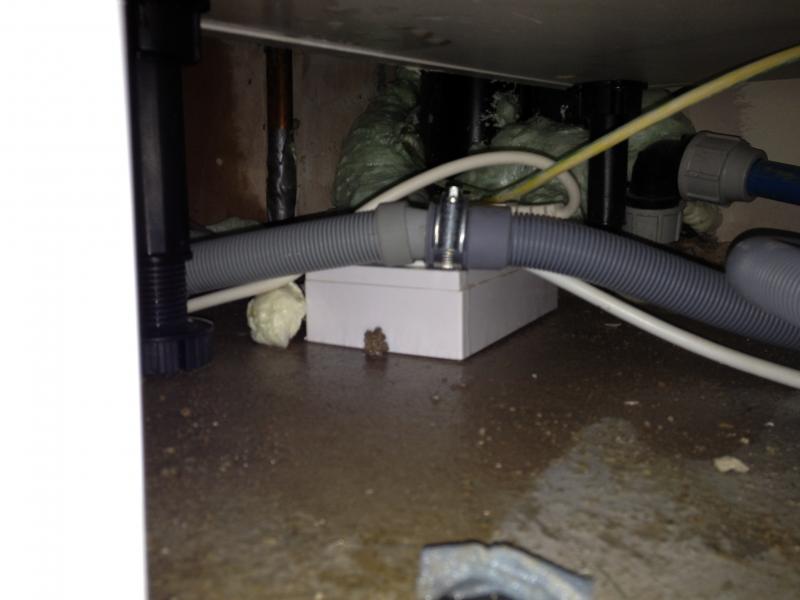Just thought some of the sparks--and indeed anyone who posts on here and has a modicum of knowledge and common sense--might like to see the pic I've attached with this post.
My son and his girlfriend, after a lot of hassle, dozens of phone calls and many, many broken promises from the letting agent, at last moved into their new build house in a town in Cheshire not far from Nantwich last night. This evening they filled and turned on the washing machine then went to relax in their living room. A little while after the machine started, the lights went off, followed by a blackout of the entire electrical supply to the house.
There was enough daylight left for my son to locate water seeping from under the sink unit in the kitchen, so he removed the kick panel and took a photo of what he found.
What you see in the photo is an extension lead on the floor underneath the kitchen sink cabinet. The washing machine supply is plugged into it, and the washing machine drain hose is draped over the top of the socket with a pipe joint judiciously positioned right on top of the socket. This joint leaked as soon as the washing machine pumped out and....POP: no juice. Fortunately they've been able to find temporary lodging with a relative tonight and plan to visit the estate agent in the morning with some urgent requests. I'm no expert but I certainly wouldn't expect to find such a horrendous lash up in any property, let alone a new one.
My son and his girlfriend, after a lot of hassle, dozens of phone calls and many, many broken promises from the letting agent, at last moved into their new build house in a town in Cheshire not far from Nantwich last night. This evening they filled and turned on the washing machine then went to relax in their living room. A little while after the machine started, the lights went off, followed by a blackout of the entire electrical supply to the house.
There was enough daylight left for my son to locate water seeping from under the sink unit in the kitchen, so he removed the kick panel and took a photo of what he found.
What you see in the photo is an extension lead on the floor underneath the kitchen sink cabinet. The washing machine supply is plugged into it, and the washing machine drain hose is draped over the top of the socket with a pipe joint judiciously positioned right on top of the socket. This joint leaked as soon as the washing machine pumped out and....POP: no juice. Fortunately they've been able to find temporary lodging with a relative tonight and plan to visit the estate agent in the morning with some urgent requests. I'm no expert but I certainly wouldn't expect to find such a horrendous lash up in any property, let alone a new one.





